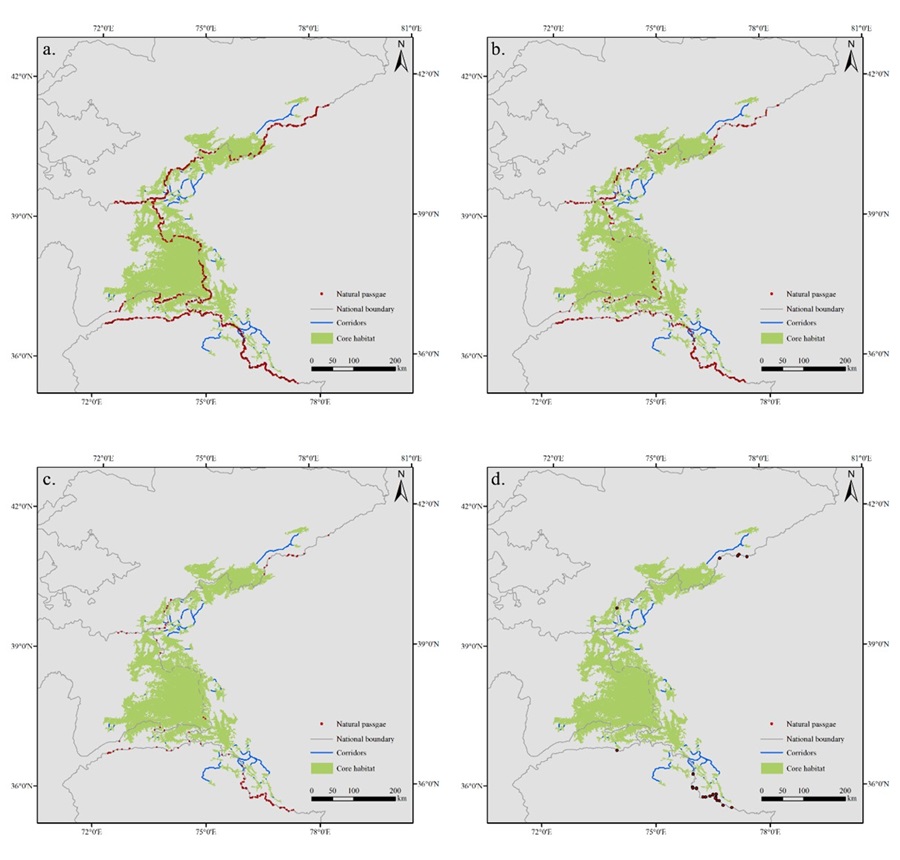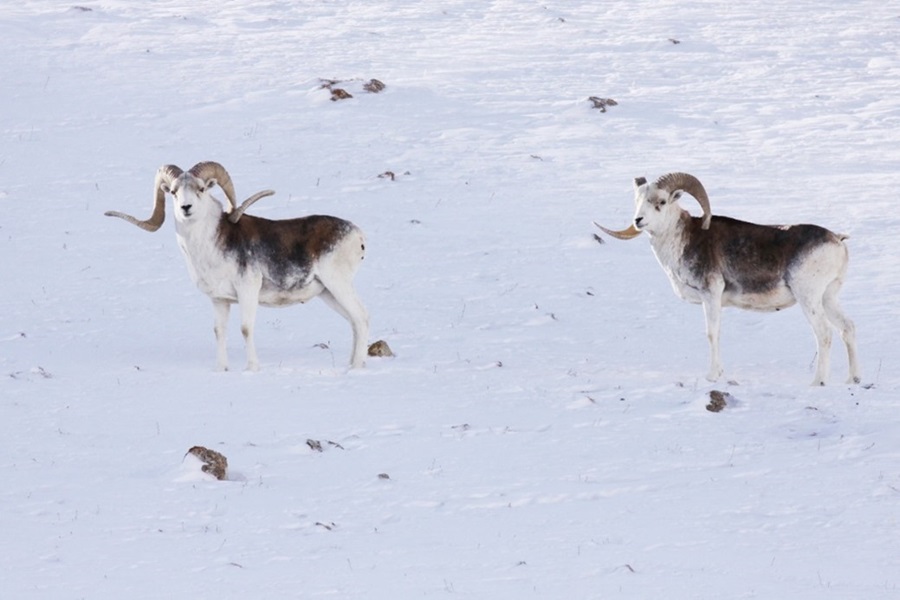Border Fences Reduce Potential for Transboundary Migration of Marco Polo Sheep (Ovis ammon polii)
2024-01-02
Border fences have severely impeded the transboundary migration of a number of large mammals worldwide, with central Asia being one of the most impacted. The Marco Polo sheep (Ovis ammon polii), an iconic species of Pamir and Near Threatened species of IUCN red list, is threatened in its transboundary movement by increasing border fencing among their five distributed countries, including Tajikistan, Kyrgyzstan, China, Afghanistan, and Pakistan.
Unfortunately, researchers currently lack knowledge of their range of core habitat, locations of habitat connectivity and transnational migration corridors, and information on the severity of the impact of border fences on the migration corridors of Marco Polo sheep across their distributional range. This paucity of information is hampering efforts to develop an effective global Marco Polo sheep conservation strategy.
To address the above issues, a research group led by Prof. YANG Weikang from the Xinjiang Institute of Ecology and Geography, Chinese Academy of Sciences, collaborating with researchers from Tajikistan, Kyrgyzstan, Afghanistan, Pakistan, Canada, and Portugal, has conducted research in identifying the range and ecological corridors of Marco Polo sheep and assess the potential effect of border fences on Marco Polo sheep. This study was published in Science of the Total Environment.
The research findings revealed that the total suitable habitat area for Marco Polo sheep spanned 62,046 km2. Tajikistan had the largest suitable habitat, accounting for approximately 42.3% of the total, China followed closely with 31.7%, while Kyrgyzstan, Afghanistan, and Pakistan had 14.9%, 6.4%, and 4.7% respectively. The study employed least-cost paths to identify a total of 51 ecological corridors, including 5 transboundary ones, which play a crucial role in maintaining connectivity within both domestic and transboundary regions.
In order to evaluate the potential impact of border fences, the study assessed four scenarios (Scenario30, 40, 50, and 60) based on varying slope limits for fence construction: 30, 40, 50, and 60 degrees. In areas where the terrain is too steep for fencing, these natural passages could be utilized by the sheep to traverse barriers or borders. The most pessimistic scenario (Scenario 60) identified only 25 migratory passages along the border fences, in stark contrast to the 997 passages discovered in the most optimistic scenario (Scenario 30). These results highlight the negative effect of extensive border fencing on the transboundary movement of Marco Polo sheep.
As per the research findings, the authors suggest that a transnational conservation park that covers at least the range of suitable habitats, ecological corridors, and natural passages should be established. In addition, the authors also propose the necessity of adequate passage for the migration of the Marco Polo sheep, as well as the ongoing continuous attention to the effects of climate change and human activities in countries along the Belt and Road on the species and their habitats.
Article link: https://doi.org/10.1016/j.scitotenv.2023.169298

Figure 1 Locations of natural passages along the border fences under four scenarios (Image by Prof. YANG Weikang’s group)

Figure 2 A picture of Marco Polo sheep Ovis ammon polii (Image by Prof. YANG Weikang’s group)
Contact:
LONG Huaping
Xinjiang Institute of Ecology and Geography, Chinese Academy of Sciences
Tel: 86-0991-7885323
E-mail: longhp@ms.xjb.ac.cn
Web: http://english.egi.cas.cn



